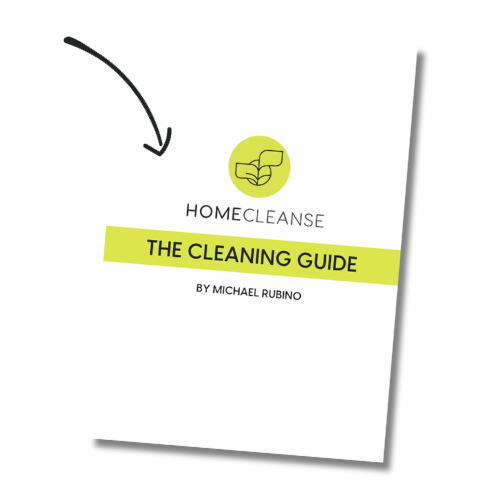Before You Go
Get Your FREE Home Cleaning Guide
Simple action items on how to make your home safer- today!

Anywhere you spend a lot of time can impact your health based on the air quality you breathe in. So, what should we do to ensure they’re healthy? Dust testing.
To help maximize our wellness and avoid environmental exposures, we should test the dust in these spaces to determine if they’re filled with contaminants like mold, mycotoxins, bacteria, and more.
Gravity brings particles like mold spores, mycotoxins, and endotoxins down to horizontal surfaces like floors, doorframes, and furniture. Where dust collects, so do these indoor contaminants.
Testing this dust will help determine what’s hanging out in your home. It can indicate if a problem needs to be addressed or give you peace of mind that you’re hanging out in a safe environment.
The Dust Test will help you know if there’s a problem before spending thousands of dollars trying to find one (both medically and in your home). And, if there is a problem, the data will indicate what you’re being exposed to before your inspector comes so that you can ensure they will find where it’s coming from.
Traditionally, inspectors conduct dust testing while they’re inside the home. By the time the results come back, though, they’re long gone and working for the next client. This can confuse you and wonder if they really "got it all" while collecting data. With The Dust Test, we help you identify the mold, bacteria, and biotoxins in the home that the inspector needs to find sources of. This data is crucial for successful remediation protocols because it provides the information needed to properly remove all sources of contamination from the home and ensure you and your family have a healthy environment that supports ongoing well-being.
The sooner you find and remediate the contamination, the less exposure you’ll face, and the less likely it is that another problem will develop elsewhere.
Bonus Tip: It’s a good idea to annually conduct dust testing in any space you spend a lot of time in, including the workplace. This will give you peace of mind that you’re not dealing with exposure from hidden sources throughout the environment.
The Dust Test uses advanced DNA and chemical sequencing technologies to detect the full range of invisible fungal and toxic particles in any home. It identifies and quantifies mold species, mycotoxins, and endotoxins, providing a cost-effective solution to determine if mold, bacteria, or toxins are present.
When your home has issues like mold or bacteria overgrowth, these organisms produce particles and toxins that travel through your home, settling in the dust. So, a scientific analysis of dust can reveal most of the problems in a home. This DIY test allows you to collect dust samples throughout all surfaces in the home and check for abnormalities using a combination of MSQPCR and other testing methods. While it does not pinpoint the exact location of the problem, it confirms if there's an issue. Armed with this information, you can confidently engage an inspector to find the source of the problem.
Recommended Testing Areas:
It can also be used to correlate with a doctor you’re working with. The test is a Swiffer-like cloth which you can collect samples from various parts of the house with, and then send back to the lab. It uses PCR technology to analyze the samples for up to 36 different species of mold—the same 36 species that the EPA found are prevalent in water-damaged homes.
There are various reasons you might choose to test your home. Here are some examples:
A member of our team is here to help! Click on “Get Started ➤” below to book a consultation with a member of the HOMECLEANSE team. We have a few quick questions that will help us put together a roadmap to solve or prevent all of your mold problems.
Two minutes of your time could lead to better health for you and your family.